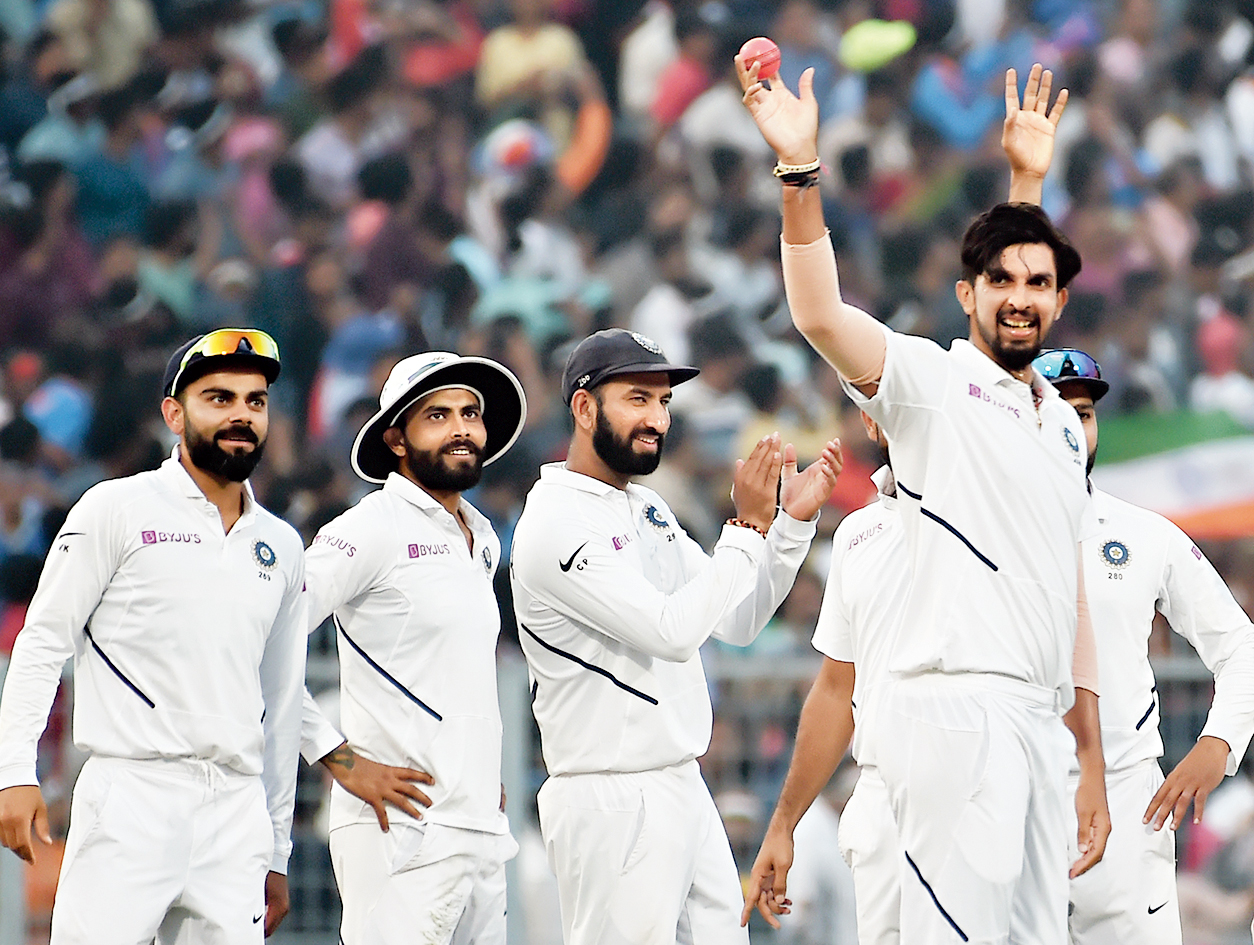Be it red or pink, the Indian team again proved why they are the best in the world while Bangladesh’s fortunes remained much the same as they were in the Indore Test.
The wide gulf in the quality of cricket between the world’s top five teams and the rest of the pack only seems to widen and will perhaps need an intervention from the International Cricket Council.
The enormity of the occasion along with the presence of Bangladesh Prime Minister Sheikh Hasina, Bengal chief minister Mamata Banerjee and the “who’s who” of Indian cricket threatened to take the gloss away from the match though the Indian pacers once again showed why they are considered among the best in the business now.
Both India and Bangladesh have had little or no experience of playing pink-ball cricket but the discrepancy in class between the teams was clear right through.
Bangladesh were out of sight by the close with Virat Kohli entrenched at the crease on 59. India were ahead by 68 runs with seven wickets in hand after the visitors had folded up for 106.
With no semblance of a contest on the field, much of the 60,000 gathering drifted away before the close. The cultural programme that followed wasn’t enough of a lure to keep them back, proving that quality cricket still remains the biggest draw at Test matches.
The attraction centred around the pink ball which held up rather better than Bangladesh for sure.
There were moments when its visibility did put the players in trouble, especially in the twilight period, once the lights came on after the supper break.
Rohit Sharma couldn’t sight the ball clearly as Abu Jayed’s nick off Mohammed Shami popped out of his hands at second slip before Cheteshwar Pujara held on to the rebound at first slip. That brought an end to Bangladesh’s dismal display in the first innings.
It was evident from Kohli’s reaction that he too hadn’t sighted the nick as it sped into Rohit’s hands.
Bangladesh’s problems were compounded when Liton Das and Nayeem Hasan were ruled out of the game after failing concussion tests. Both were hit on the helmet by express deliveries from Shami. Mehidy Hasan and Taijul Islam were the concussion substitutes.
Since the visitors didn’t have a fit batsman as a like-for-like substitute in the squad, Mehidy was allowed to replace Liton. He, however, won’t be able to bowl.
Both Liton and Nayeem were taken to a private hospital for tests and then discharged. They are said to be out of danger with “no injury found in CT scan and other examinations”, according to a hospital spokesperson.
The first session was all about India’s pace battery exploiting the bounce and carry on the Eden wicket. The grass had been trimmed before the start but Ishant Sharma, Umesh Yadav and Shami were able to generate enough movement in the air and off the seam to put Bangladesh in a quandary.
For most part of their innings, Bangladesh batsmen were reeling from a barrage of short deliveries and some were found flinching in the face of pace. Ishant was the most successful with five wickets but such was the impact created by Umesh and Shami at the other end, that there was no respite for the batsmen.
Bangladesh lost six wickets in the first passage of play, when the ball was new, and the remaining when twilight had just started to set in.
To India’s credit, they survived the most critical session without much damage despite losing the openers early. A different coloured ball couldn’t hide the truth: Kohli and Cheteshwar Pujara (55) were a class apart and will make runs no matter what the circumstances.











